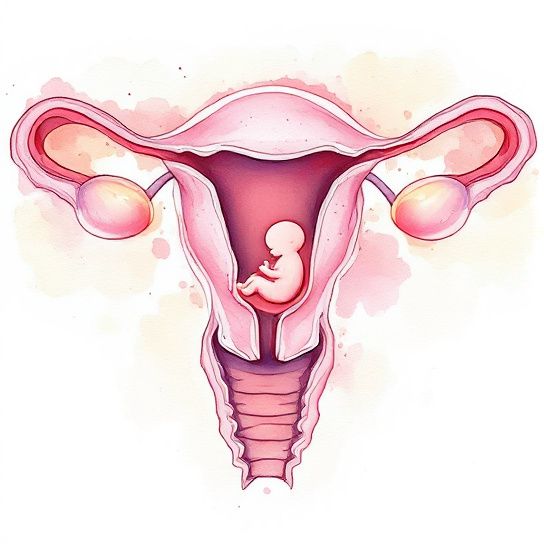Ever find yourself wondering **what hormones change during pregnancy**? It’s a fair question, often popping into our minds, especially when bracing for the beautiful chaos that is preparing for a baby. Your body becomes this amazing, ever-adjusting landscape that operates entirely on its terms. It’s like suddenly becoming aware that there’s this whole symphony of hormones getting their moment in the spotlight. Some of these hormonal stars you might recognize, while others are brand new to the stage. Trust me; understanding these changes can really help take the edge off when you’re navigating mood swings or unexpected cravings.
Meet the Hormones Steering the Show
Let’s start by introducing you to the key hormonal players. Besides being more than just fascinating tidbits, these hormones are practical contributors to your and your baby’s development.
Human Chorionic Gonadotropin (hCG)
This one tends to get its fame mostly because it’s the hormone that pregnancy tests are designed to detect. Without being too technical, from early in pregnancy, hCG ramps up production. Why? It signals the body to continue producing progesterone and prevent menstruation.
Progesterone
Progesterone, my friend, is a biggie. Along with supporting your uterine lining, **progesterone helps sustain pregnancy**. It works diligently to keep your uterus relaxed, which is certainly desirable as you wouldn’t want contractions too early on. However, it’s not all smooth sailing, as its side effects can range from causing fatigue to contributing to that infamous pregnancy brain fog.
Estrogen
Oh, estrogen! This hormone works overtime during the nine months, increasing steadily as time goes by. Estrogen’s contributions are vast, boosting blood flow and maintaining the placenta – the essential link between you and the baby. It’s also responsible for those distinctive skin changes you might notice, for better or worse.

Relaxin
Relaxin as a name kind of gives it away. This unsung hero works its magic to **loosen ligaments** and joints, preparing the pelvis for childbirth. Naturally, it brings its baggage too, such as the common complaint of back or hip discomfort due to its loosening effects.
Lesser-Known Hormonal Influences
The more commonly discussed hormones often overshadow these newcomers, but merit at least an honorable mention.
Human Placental Lactogen (hPL)
Once the placenta steps in, **human placental lactogen starts its work**. What does it actually do? It handles regulating your metabolism to make sure the baby gets adequate nutrition.
Oxytocin
Often dubbed the “love hormone,” oxytocin isn’t majorly different during pregnancy, but boy, does it amp up towards delivery. It’s responsible for contractions when the time is right and plays a big role in post-birth bonding.
Prolactin
The body’s natural factory to stimulate milk production is helmed by prolactin. Its production gears up around the end of pregnancy. Understanding prolactin gives you a sense of how breastfeeding prep starts way before labor.
A Rollercoaster of Emotional and Physical Changes
With hormones fluctuating, it’s not surprising that emotions—and sometimes tensions—might run high. It’s part of the journey. Here’s a raw rundown of common emotional changes you might experience:

- Mood Swings: With fluctuating hormone levels, swinging between joy and tears in moments is normal.
- Changes in Anxiety and Irritability: Establishing a calmer baseline can help; try some simple breathing techniques.
- Feelings of Euphoria: Sometimes overwhelming, the feeling of happiness or love can seem almost surreal.
Without forgetting the nitty-gritty of physical changes that hormones are responsible for:
- Morning Sickness & Nausea: Thanks to hCG and progesterone, many expectant moms face this.
- Body Image Awareness: Estrogen and other hormones sometimes cause changes in skin tone and general body shape perception.
Navigating Through the Hormonal Storm
Okay, not everything needs to be a science experiment. Here’s how you can manage some of these changes practically. Trust me on this one:
Embrace Variation and Self-Awareness
Being aware builds resilience. Pay attention to your body and handle non-urgent discomforts before they turn into stress loops. This could mean anything from switching up your daily activities when needed to find comfort-driven solutions, like that cozy maternity pillow for nighttime rest.
Open Dialogue

Discussing what you’re experiencing helps. Engaging conversations with your partner, friends, or healthcare provider offers different perspectives that normalize your path. It’s amazing how shared experiences can create the most beautiful connections.
Gentle Physical Activity
Taking a walk or practicing prenatal yoga can help fend off the bodily aftereffects of Relaxin. Pass on intense workouts and lean towards gentler exercises that follow your rhythm but help restrict stiffness.
Mindful Nutrition
Fuel your journey with foods high in rich nutrients that balance hormonal stressors. You’ve probably heard this, but bringing it back into your routine here can be a game-changer.
Hustle-Free Rest
Schedules go haywire post-baby, but ensuring you’re stacking up on rest pre-empty nester days really saves nerves. Lie low when your body signals restlessness, without feeling guilty about occasional midday naps.
When Concern Brings You Back to Reality
Every journey through pregnancy is unique. While there’s a general scope of hormonal fluctuations, it’s crucial to address any significant worries with your healthcare provider. Whether it’s extreme discomfort, mood that feels overly perturbed, or concerns about progression, getting timely feedback always counts more than just Googling someone else’s experience.
Let’s loop back to the question: **What hormones change during pregnancy?** Navigating through these changes, with understanding, independent discovery, and—most importantly—a community felt approach.
So, next time you find yourself fielding sudden emotional shifts or puzzling through physical sensations, remember that your body’s crafting and conducting one of the most extraordinary changes you can imagine—growing a new human, all set to meet this wondrous world. So, enjoy the company of these hormones. Appreciate their elusive magic and craftsmanship as something humanly staggering yet deeply, intimately personal.
Frequently Asked Questions
What are the benefits of using a hair mask in my hair care routine?
Using a hair mask can provide several benefits, including hydration, smoothing, strengthening, curl definition, heat protection, and damage repair. Hair masks infuse the hair with moisture, help coat the hair shaft to seal split ends, reduce breakage, and protect the hair from heat styling and environmental damage[1][4].
What ingredients should I look for in a hair mask?
Effective hair masks often include ingredients such as coconut oil, argan oil, shea butter, honey, avocado oil, green tea, and coconut water. These ingredients provide nourishment, moisturize, and protect the hair, offering benefits like softening, moisturizing, and protecting against damage[2][5].
How often should I use a hair mask in my routine?
You should use a hair mask whenever your hair feels dry, unmanageable, or in need of intense hydration. This can vary depending on your hair type and needs, but generally, using a hair mask once or twice a week can help maintain healthy and moisturized hair[1][4].
How do I apply a hair mask for the best results?
To apply a hair mask effectively, shampoo your hair first, then apply the mask, focusing especially on the ends where hair tends to be the most damaged. Leave the mask on for anywhere from 10 minutes to overnight, depending on the type of mask and your hair’s needs[1][4].
References



